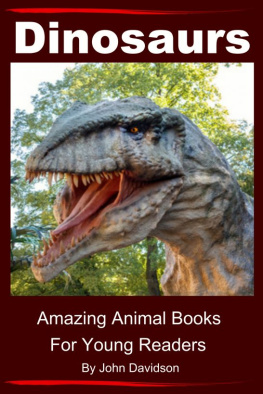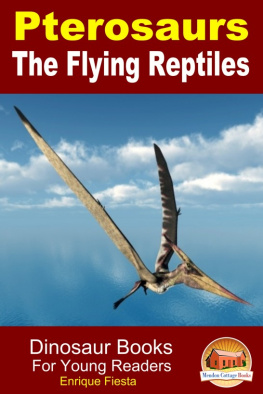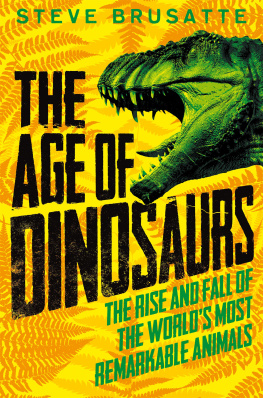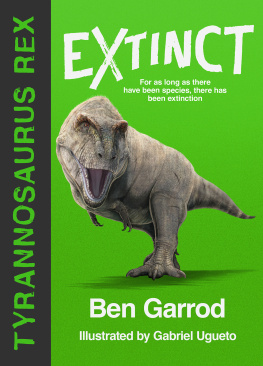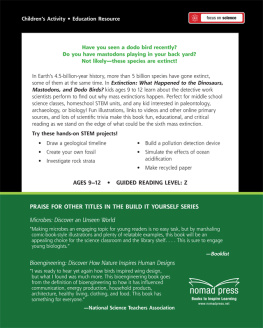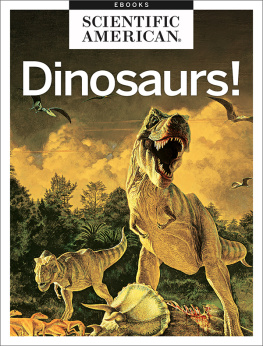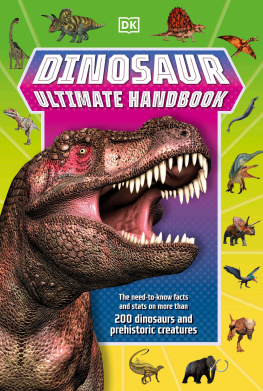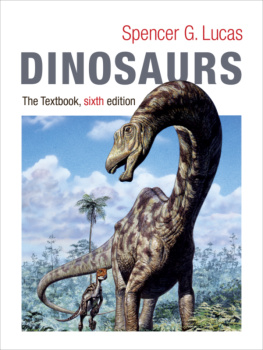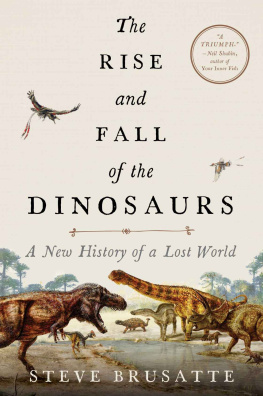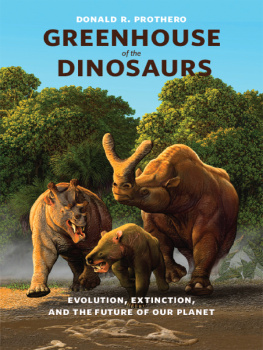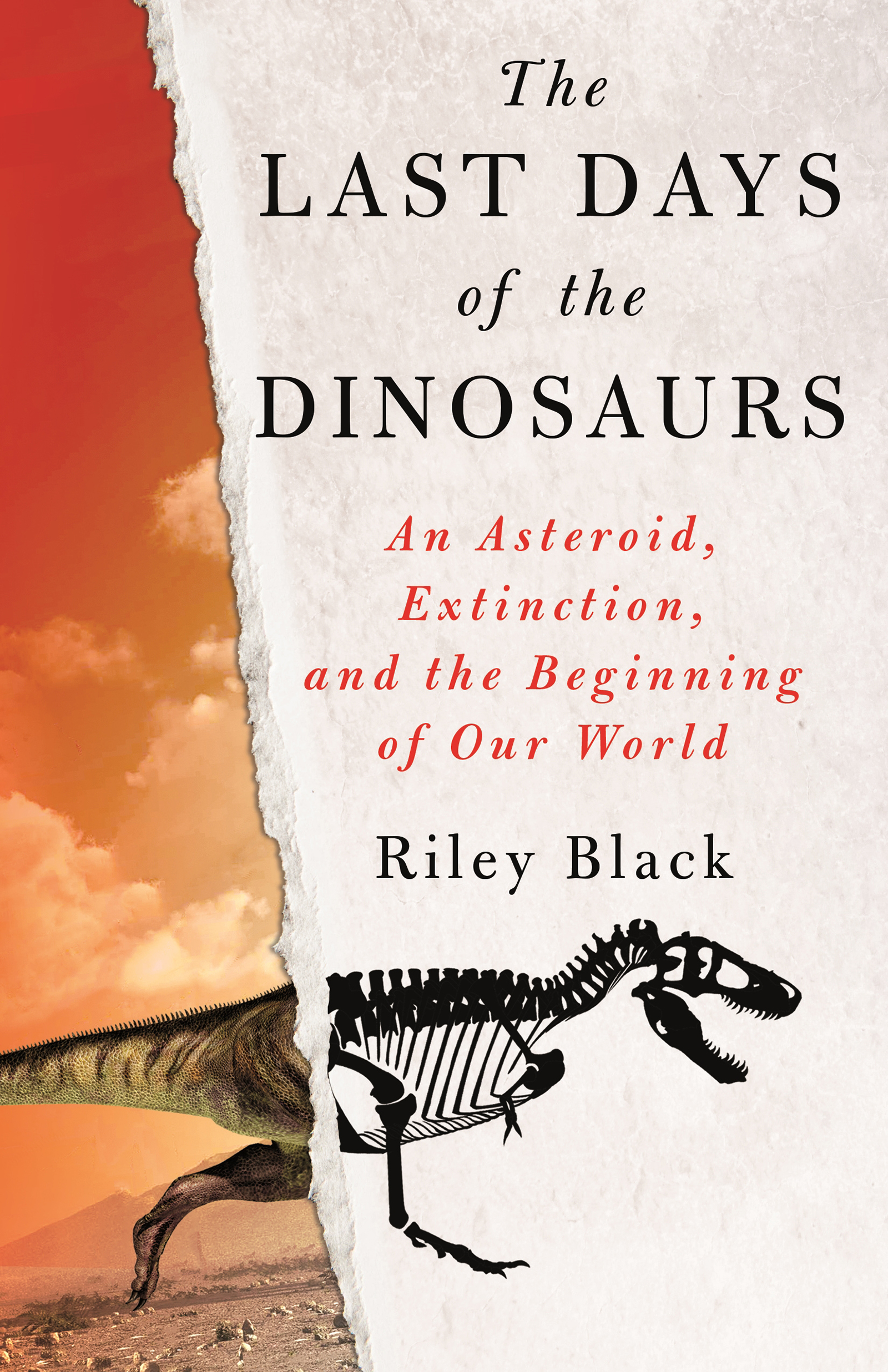Contents
Guide
List of Figures
Pagebreaks of the print version

The author and publisher have provided this e-book to you for your personal use only. You may not make this e-book publicly available in any way. Copyright infringement is against the law. If you believe the copy of this e-book you are reading infringes on the authors copyright, please notify the publisher at: us.macmillanusa.com/piracy.
For Margarita
No amount of time would have been enough.
Catastrophe is never convenient.
The dinosaurs never expected it. Nor did any of the other organisms, from the tiniest bacteria to the great flying reptiles of the air that were thriving on a perfectly normal Cretaceous day 66 million years ago. One moment life, death, and renewal proceeded just as they had the day before, and the day before that, and the day before that, stretching back through millions upon millions of years. The next, our planet suffered the worst single day in the entire history of life on Earth.
In an instant, lifes entangled bank was thrown into fiery disarray. There were no warning signs, no primordial klaxon that would blare and send Earths organisms rushing to whatever refuges they might find. There was no way for any species to prepare for the disaster that came crashing down from the sky with an explosive force 10 billion times greater than the atomic bombs detonated at the end of World War II. And that was just the beginning. Fires, earthquakes, tsunamis, and the choking hold of an impact-created winter that lasted for years all had their own deadly roles to play in what followed.
The disaster goes by different names. Sometimes its called the end-Cretaceous mass extinction. For years, it was called the Cretaceous-Tertiary, or K-T, mass extinction that marked the end of the Age of Reptiles and the beginning of the third, Tertiary age of life on Earth. That title was later revised according to the rules of geological arcana to the Cretaceous-Paleogene mass extinction, shortened to K-Pg. But no matter what we call it, the scars in the stone tell the same story. Suddenly, inescapably, life was thrown into a horrible conflagration that reshaped the course of evolution. A chunk of space debris that likely measured more than seven miles across slammed into the planet and kicked off the worst-case scenario for the dinosaurs and all other life on Earth. This was the closest the world has ever come to having its Restart button pressed, a threat so intense thatif not for some fortunate happenstancesit might have returned Earth to a home for single-celled blobs and not much else.
The effects of the impact were swift and dire. The heat, fire, soot, and death blanketed the planet in a matter of hours. What happened at the end of the Cretaceous wasnt a prolonged pulse of die-offs from depleted atmospheric oxygen or acidified seas. This calamity was as immediate and horrific as a bullet wound. The fates of entire species, entire families of organisms, were irrevocably changed in a single moment.
Biologists still argue about what the definition of life truly isreproduction, growth, movementbut the one amazing fact that we are confronted with every day is that life is incredibly, irrepressibly resilient. Every organism alive today is tied together, each life connected to the one before it. Even as we acknowledge that 99 percent of all species that once lived are now extinct, our world is still brimming with organisms that have survived, evolved, and thrived in their own ways.
In fact, much of our present era owes its existence to the destruction of the K-Pg disaster. The world as we know it today is the continued flowering after a disaster, life not only coming back but reshaped by the very nature of the cataclysm.
In the hours, days, weeks, months, and years following impact, almost every branch in the tree of life was lopped off, damaged, or struggled to grow. Even the organisms that we think of as survivors were not left unscathed. During the K-Pg catastrophe, there were mass extinctions of mammals, lizards, birds, and more, the ecological chaos touching the whole of life on Earth. From the foggy and sometimes dim windows of the fossil record, paleontologists have estimated that about 75 percent of known species that were alive at the end of the Cretaceous were not present in the next sliver of time. As if to drive the point home, a band of clay packed with the metal iridium marks the boundary between the Age of Dinosaurs and the opening chapters of the Age of Mammals. In some places, such as eastern Montana and the western Dakotas, you can follow the story layer by layer, watching the likes of Triceratops disappear as a world of diminutive fuzzballs begin to flourish in a new Age of Mammals.
We still feel the loss. As a child, I felt it patently unfair that I could not ride my very own Tyrannosaurus rex to school. Even though Ive never seen them beyond distorted, permineralized bones, I feel like I miss the non-avian dinosaursnostalgia for a time I can never witness, when dinosaurs ruled the Earth. But if the non-avian dinosaurs had survived, our own story would have been altered. Or perhaps prevented altogether. Not only would mammals have remained small under an extended regime of non-avian dinosaurs, but the earliest, shrew- like primates might have stayed in tight competition with the dominant marsupials. Our ancestors would have been molded in different ways, and its likely, if not certain, that the world would never have been suitable for a mostly hairless, bipedal ape with a big brain and a penchant for remodeling the planet. The mass extinction at the end of the Cretaceous isnt just the conclusion of the dinosaurs story, but a critical turning point in our own. We wouldnt exist without the obliterating smack of cosmic rock that plowed itself into the ancient Yucatn. Both stories are present in that moment. The rise and the fall are inextricable.
And here, we often leave the epic tale. The dinosaurs were dominant, even cocky in our prehistoric visions. The largest, strangest, and most ferocious of all inhabited the Late Cretaceous world of soggy swamps and steaming forests. A wayward asteroid suddenly ended their reign, leaving the meek to inherit the Earth. Just as the dinosaurs once benefitted from a mass extinction that allowed them to step out of the shadow of ancient crocodile relatives 201 million years ago, so, too, were our warm-blooded, snuffly little forebears the recipients of good fortune they never earned nor have ever repaid.
We entirely gloss over the nature of recovery, or what made the difference between the survivors and the dead. We obsess over what we lostblinded to how, even in the shocking cold that followed the initial heat of annihilation, life was already beginning to reseed and recover. Its an extension of how we often cope in the wake of our own personal traumas, remembering the wounds as we struggle to see the growth stimulated by terrible events. Resilience has no meaning without disaster. And thats what led me to this story, the tale of how life suddenly shifted but nevertheless continued to bring us to the here and now. What Im going to tell you involves hurt and destruction, but that is only the setting for a turning point thats often been taken as a given or somehow inevitable. This is the story of how life bounced back from the worst day in history. Lifes losses were sharp and deeply felt 66 million years ago, but each fiddlehead struggling for light, each shivering mammal in its burrow, each turtle that plopped off a log into weed-choked waters set the stage for the world as we know it now. This is not a monument to loss. This is an ode to resilience that can only be seen in the wake of catastrophe.


